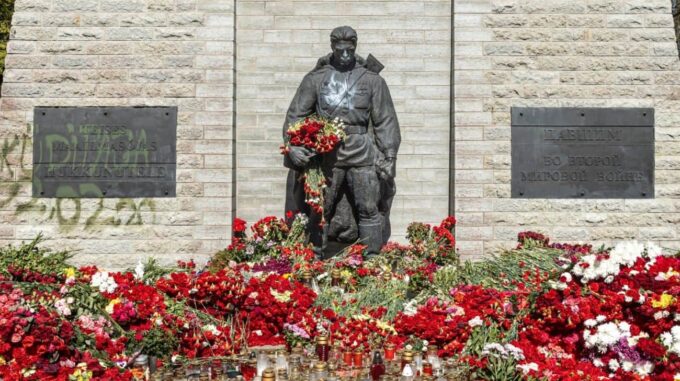In Tallinn, unknown individuals vandalized the Soviet monument “The Bronze Soldier,” which has become one of the most debated symbols of the former Soviet past and ongoing political disputes in Estonia

The incident occurred at the city’s military cemetery, prompting a wave of public discussions about attitudes toward Soviet symbols and the memory of history. According to sources—specifically, the Postimees newspaper and the Ukrainian portal "European Pravda"—unknown persons painted the monument with white paint, and a word was inscribed nearby in Estonian—"küüditaja," meaning "deporter." This act of vandalism was condemned by local law enforcement, who have initiated proceedings regarding damage to a historic site. Vaeiko Vaher, head of the operational bureau of Põhja-Tallinn police precinct, stated that the police are currently searching for the perpetrators: “According to available information, there were two vandals. Their identities are not yet known. Last night, patrols searched the surrounding areas, but they have not yet been able to find those responsible for the vandalism.” The police are actively cooperating with the cemetery’s administrator—the Estonian Military Museum—which is already working to clean the monument from the graffiti. Officials note that this is not the first incident in recent years where the "Bronze Soldier" monument has suffered such damage. Interestingly, just a few days ago, local residents and veterans laid flowers at the memorial, highlighting societal contradictions in the perception of this monument. It is worth mentioning that the symbolic significance of the "Bronze Soldier" in modern Estonia makes it a source of conflicts and social confrontations. In 2007, this issue became particularly sensitive when Tallinn authorities decided to move the monument from the city center to the military cemetery to prevent provocations and tense situations. However, this decision led to unexpected consequences: large-scale riots and a wave of disinformation and cyberattacks from Russia and its allies. These events remain among the most tragic episodes in Estonia-Russia relations and continue to symbolize the sharp conflicts of the past and contemporary political ideologies in the collective memory. Currently, the situation with the damage to the "Bronze Soldier" raises questions about the resilience of civil harmony in the country and the need for finding compromise solutions. Local leaders emphasize the importance of preserving memory and avoiding further provocations, as such actions only increase societal tensions. Confrontations extend beyond history and are reflected in political debates, public protests, and discussions about the place of the Soviet past in modern Estonia, which continues to seek its national identity and historical memory. At present, law enforcement agencies promise to make every effort to solve this case and prevent further acts of vandalism against military and symbolic objects. Meanwhile, many Estonians can only hope that society will find a path toward dialogue and understanding, because only through unity and acceptance of different viewpoints can new conflicts be avoided and historical memory preserved intact.

